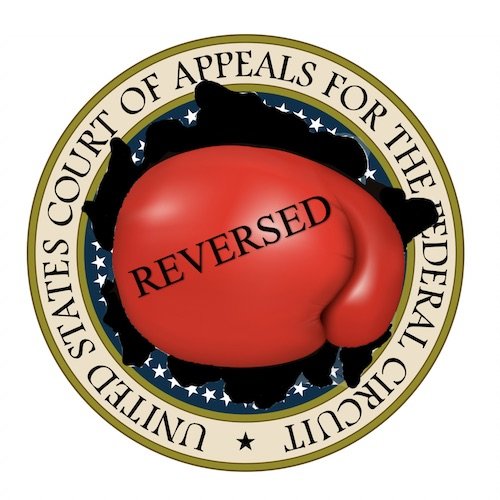[ad_1]
“This case entails nothing apart from an assertion that as a result of two coordinate programs have been disclosed in a previous artwork reference and have been subsequently ‘identified,’ that satisfies the motivation to mix evaluation. That’s an error as a matter of legislation. It doesn’t suffice to easily be identified. A cause for combining should exist.” – CAFC opinion
In a precedential determination authored by Chief Choose Moore, the U.S. Courtroom of Appeals for the Federal Circuit (CAFC) on Wednesday partially reversed a Patent Trial and Appeal Board (PTAB) ruling that sure claims of Virtek Imaginative and prescient Worldwide’s patent on a way for aligning a laser projector have been unpatentable, discovering the Board erred as a matter of legislation in its evaluation. The courtroom additionally affirmed the PTAB’s discovering that different claims weren’t confirmed unpatentable.
Aligned Imaginative and prescient challenged varied claims of Virtek’s U.S. Patent No. 10,052,734, which is titled “Laser Projector with Flash Alignment,” through inter partes evaluate (IPR), arguing claims 1, 2, 5, 7, and 10–13 would have been apparent over prior artwork references titled Keitler and Briggs (Floor 1), and over Briggs and one other reference, Bridges (Floor 3). It additionally argued claims 3–6 and eight–12 would have been apparent over Keitler, Briggs, and ‘094 Rueb (Floor 2), and over Briggs, Bridges, and ‘094 Rueb (Floor 4).
On enchantment, Virtek argued that the Board’s findings weren’t supported by substantial proof as a result of Aligned Imaginative and prescient relied solely on Briggs’ point out of “figuring out the 3D coordinates of targets” to point out Virtek’s declare to “figuring out a sample of the reflective targets on the work floor in a 3 dimensional coordinate system” would have been apparent to a talented artisan. “Neither Keitler (Floor 1) nor Bridges (Floor 3) discloses figuring out targets in a 3D coordinate system as claimed,” wrote the CAFC. “As a substitute, each references disclose figuring out an angular course of every goal.” The courtroom thus discovered the Board “erred as a matter of legislation in concluding {that a} expert artisan would have been motivated to make use of the 3D coordinate system disclosed in Briggs as an alternative of the angular course programs in Keitler or Bridges” as a result of recognizing that two different preparations have been identified within the artwork isn’t adequate to fulfill the motivation to mix requirement. The courtroom continued:
“The mere undeniable fact that these doable preparations existed within the prior artwork doesn’t present a cause {that a} expert artisan would have substituted the one-camera angular course system in Keitler and Bridges with the two-camera 3D coordinate system disclosed in Briggs.”
The CAFC turned to KSR Int’l Co. v. Teleflex Inc., 550 U.S. 398, 421 (2007) for an understanding of when limitations from completely different references may be mixed to achieve a conclusion of obviousness. Below KSR, “[w]hen there’s a design want or market strain to resolve an issue and there are a finite variety of recognized, predictable options, an individual of extraordinary ability has good cause to pursue the identified choices inside his or her technical grasp.” However KSR didn’t get rid of the necessity for a motivation to mix prior artwork references to exist, mentioned the courtroom:
“Right here, there was no argument about widespread sense within the petition or in [Aligned Vision’s expert] Dr. Mohazzab’s declaration…. There was no proof that there are a finite variety of recognized, predictable options. There isn’t a proof of a design want or market strain. In brief, this case entails nothing apart from an assertion that as a result of two coordinate programs have been disclosed in a previous artwork reference and have been subsequently “identified,” that satisfies the motivation to mix evaluation. That’s an error as a matter of legislation. It doesn’t suffice to easily be identified. A cause for combining should exist.”
Thus, the courtroom discovered substantial proof didn’t exist for the Board’s holding and reversed the choice as to claims 1, 2, 5, 7, and 10–13.
As to Aligned Imaginative and prescient’s cross-appeal, the courtroom held that the argument introduced in help of a motivation to mix for the claims that have been upheld was “conclusory” statements made by Aligned Imaginative and prescient’s knowledgeable and located that the Board’s evaluation upholding these claims was supported by substantial proof.
Picture Supply: Deposit Pictures
Picture ID: 10042948
Creator almoond

[ad_2]
Source link

